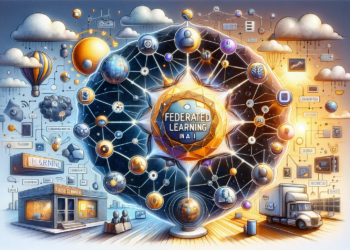Huffman coding is a data compression technique that has been used for decades to reduce file size and improve efficiency. It relies on assigning shorter codes to the most common symbols in a data sequence and longer codes to the less common symbols. This technique has been widely used in the field of Artificial Intelligence (AI) to decrease the size of files and enhance algorithm efficiency. In this article, we will explain in detail what Huffman coding is, how it works, its advantages and disadvantages, and how it can be applied in the field of Artificial Intelligence.
What is Huffman coding?
Huffman coding is a data compression technique that involves assigning shorter codes to the most common symbols in a data sequence and longer codes to the less common symbols. This technique was invented by David A. Huffman in 1952.
How does Huffman coding work?
Huffman coding operates by assigning binary codes to each symbol in a data sequence. The shorter codes are assigned to the most common symbols, and the longer codes are assigned to the less common symbols. The aim of this technique is to minimize the size of files by allocating shorter codes to the more frequently occurring symbols.
To assign codes, the Huffman algorithm first calculates the relative frequency of each symbol in a data sequence. Then, it assigns binary codes based on the relative frequency of each symbol. This means that the codes assigned to the most common symbols will be shorter than those assigned to the less common symbols.
After the codes have been assigned, the Huffman algorithm generates a binary tree to represent the codes. Each node of the tree represents a symbol, and the paths from the root node to each node represent the binary codes assigned to that symbol.
What are the advantages and disadvantages of Huffman coding?
The advantages of Huffman coding include its simplicity, efficiency, and ability to reduce file size. This technique is straightforward and easy to implement, and it’s highly efficient in terms of time and memory. Moreover, by assigning shorter codes to the most common symbols, this method reduces the size of files.
The disadvantages of Huffman coding include its dependence on the relative frequency of symbols in the data sequence and its limited capacity to compress data. This technique relies on the relative frequency of symbols to assign codes, which means that the codes may not always be the most efficient possible. In addition, this technique has limited capacity to compress data, so it is not always the best choice for compressing large volumes of data.
How can Huffman coding be applied in the field of Artificial Intelligence?
Huffman coding can be applied in the field of Artificial Intelligence to minimize file sizes and boost the efficiency of algorithms. This technique can be used to compress training data and reduce the time and memory needed to train an AI model. It can also be used to compress prediction data and shorten the time and memory required for making predictions.
Huffman coding can also be utilized to compress image data and lessen file sizes. This technique can be used to compress image data without affecting image quality. This can be useful for reducing the size of image files without compromising their quality.
Conclusion
Huffman coding is a data compression technique that has been utilized for decades to reduce file sizes and enhance efficiency. It is based on the principle of assigning shorter codes to the most common symbols in a data sequence and longer codes to the less common ones. This technique has been widely employed in the field of Artificial Intelligence to decrease file sizes and improve the efficiency of algorithms. While this method has its pros and cons, it remains a useful tool for compressing data and enhancing AI algorithm efficiency.






















